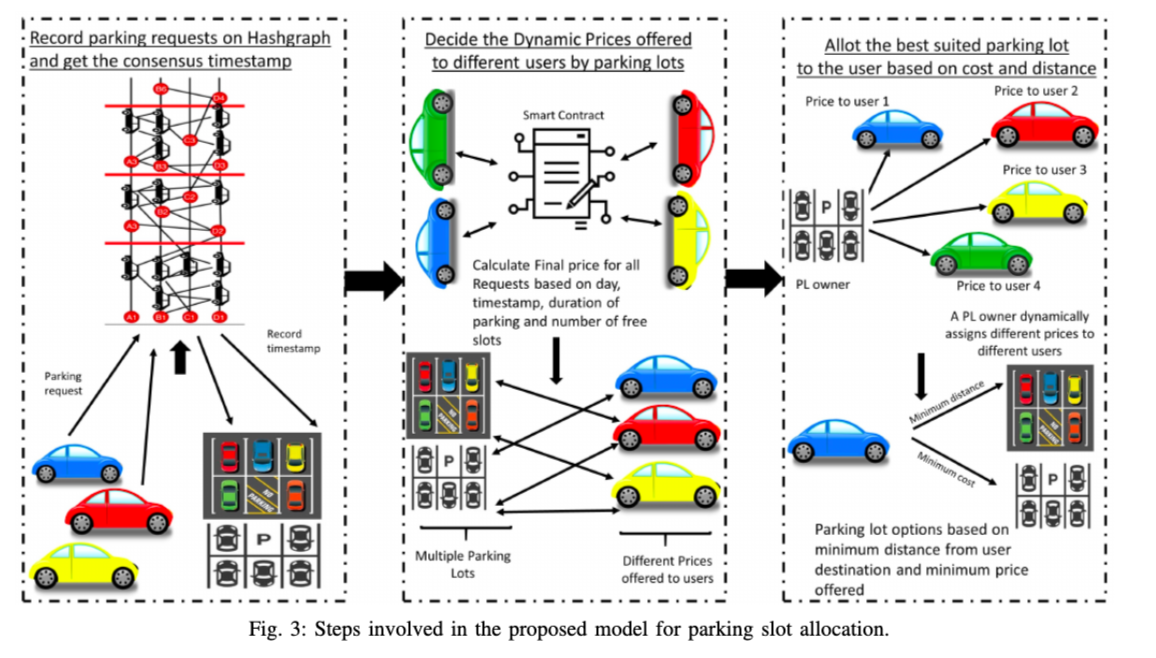Vanets
This project focuses on solving various research issues pertaining to VANETs e.g. Vehicular communication, V2G operations etc.
Team Members
- Vinay Chamola (Senior Member, IEEE)
- Vikas Hassija
- Tejasvi Alladi
Collaborators
- Richard Yu, Carleton University, Canada (Fellow, IEEE)
- Joel Rodrigues, INATEL, Brazil (Fellow, IEEE)
- Mohsen Guizani, Qatar University (Fellow, IEEE)
Our publications in VANETs
Abstract
Abstract
The Vehicle-to-Grid (V2G) network is, where the battery-powered vehicles provide energy to the power grid, is highly emerging. A robust, scalable, and cost-optimal mechanism that can support the increasing number of transactions in a V2G network is required. Existing studies use traditional blockchain as to achieve this requirement. Blockchain-enabled V2G networks require a high computation power and are not suitable for microtransactions due to the mining reward being higher than the transaction value itself. Moreover, the transaction throughput in the generic blockchain is too low to support the increasing number of frequent transactions in V2G networks. To address these challenges, in this paper, a lightweight blockchain-based protocol called Directed Acyclic Graph-based V2G network (DV2G) is proposed. Here blockchain refers to any Distributed Ledger Technology (DLT) and not just the bitcoin chain of blocks. A tangle data structure is used to record the transactions in the network in a secure and scalable manner. A game theory model is used to perform negotiation between the grid and vehicles at an optimized cost. The proposed model does not require the heavy computation associated to the addition of the transactions to the data structure and does not require any fees to post the transaction. The proposed model is shown to be highly scalable and supports the micro-transactions required in V2G networks.

Abstract

Abstract
Parking lot allocation problem has received much attention in recent years. There have been various works in the literature that target the parking slot allocation problem. However, most of these works use algorithms that run on centralized servers and are based on some predictions on historical data. Due to the dynamic nature of vehicular networks, the accuracy of such prediction models is not high which ends up in a chaotic situation for the parking lot owners as well as the vehicle owners. Therefore, a distributed Parking slot Allocation Framework based on Adaptive Pricing Algorithm and Virtual Voting is proposed in this paper. The proposed model is based on virtual voting and hashgraph consensus algorithm. Using the model, all users and parking lot owners can easily come to consensus finality about the allocation of a parking slot with the use of minimal bandwidth. The proposed model provides a fair, fast and cost-optimal parking slot allocation method. The perfect ordering of allocation requests is also maintained based on consensus timestamp. Further, an adaptive pricing model is proposed to enhance the overall revenue of the parking lot owners and comfort of the users. The proposed model is deterministic and can reduce the average parking cost and time. Performance evaluations reveal that the proposed model outperforms its counterparts in terms of accurate parking slot allocation, reduced cost and parking lot resource utilization.

Abstract

Abstract

Abstract

Abstract
Parking lot allocation problem has received much attention in recent years. There have been various works in the literature that target the parking slot allocation problem. However, most of these works use algorithms that run on centralized servers and are based on some predictions on historical data. Due to the dynamic nature of vehicular networks, the accuracy of such prediction models is not high which ends up in a chaotic situation for the parking lot owners as well as the vehicle owners. Therefore, a distributed Parking slot Allocation Framework based on Adaptive Pricing Algorithm and Virtual Voting is proposed in this paper. The proposed model is based on virtual voting and hashgraph consensus algorithm. Using the model, all users and parking lot owners can easily come to consensus finality about the allocation of a parking slot with the use of minimal bandwidth. The proposed model provides a fair, fast and cost-optimal parking slot allocation method. The perfect ordering of allocation requests is also maintained based on consensus timestamp. Further, an adaptive pricing model is proposed to enhance the overall revenue of the parking lot owners and comfort of the users. The proposed model is deterministic and can reduce the average parking cost and time. Performance evaluations reveal that the proposed model outperforms its counterparts in terms of accurate parking slot allocation, reduced cost and parking lot resource utilization.
